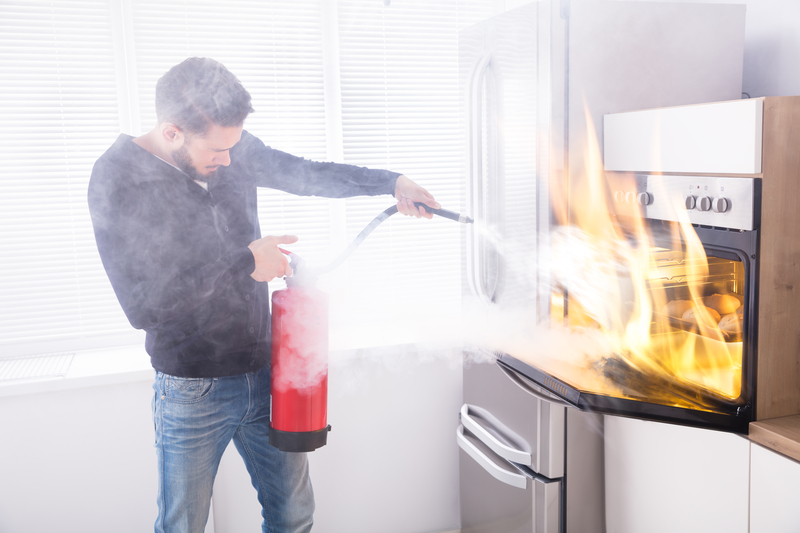
15 Jun Home Fire Safety Starts with Proper Planning
It’s everyone’s worst nightmare. The smoke detector goes off in the middle of the night, and you wake up to the smell of smoke and the sight of a fire in your home. Your first instinct, of course, is to get everybody out as quickly as possible. But, without a plan in place, it can be difficult to stay calm. Because at this point, it’s too late to consider the safest route, a meeting spot for your family once safely outside, or even how the fire could have been prevented. Because the fact is, home fire safety begins with the right preparedness. So, how can you be ready should you become a victim of a home fire?
Smoke Detectors
A working smoke alarm, or detector, can mean the difference between life and death in the event of a home fire. So, be sure to have working smoke detectors in your home. Remember that smoke alarms should be installed in every bedroom, outside each sleeping area, and on every level of the home. To be sure they’re in working order, test your alarms once a month and be mindful if your alarm “chirps” or “beeps,” as that can indicate that it’s time to replace the batteries. Speaking of which, smoke alarm batteries should be replaced in accordance with the manufacturer’s instructions at least once a year. And lastly, be sure to replace the alarm as suggested by the manufacturer’s instructions, or at least every ten years.
Fire Extinguishers
Fire extinguishers work great if they are within easy access to you and you know how to use them. Be sure to have them on every floor of your home, and definitely in rooms where the threat of a fire is the highest, such as kitchen and furnace room. Keep them in places you’ll remember, and be sure you know how to operate them— you don’t want to be reading directions when you should be putting out flames. Also, when talking about kitchen safety, never leave flammable items too close to heat sources or leave cooking food unattended.
Electrical Safety
Practice proper electrical safety (see last month’s blog for more on this). Part of this means not overloading outlets or using power strips for major appliances, but it also means turning off and unplugging small appliances when not in use. Also, always clean the dryer lint out of your dryer after each load of laundry to prevent lint buildup. (Lint is a highly flammable substance.)
Fire Escape Plan
If a smoke alarm goes off, it’s imperative to have a fire escape plan in place so everyone in the family knows what to do and where to go. Sit down as a family, devise an agreed-upon plan, and be sure everyone knows what the fire alarm sounds like so they recognize it should it go off. Walk through your home and inspect all possible exits and escape routes. Ensure the escape routes are clear and doors and windows can be opened easily. Be sure to decide who will assist small children or older family members out of the home. Then, choose an outside meeting place (a neighbor’s house, a light post, mailbox, or stop sign) a safe distance away from your home where everyone can meet once outside. Make sure to mark the location of the meeting place on your escape plan. Then, remember, once you’re out, stay out. Do not re-enter the burning home; lastly, consider practicing your home fire escape plan twice a year, making the drill as realistic as possible.
Talking about fire safety, especially with young children, can feel like a scary conversation. But proper planning is crucial to the proper execution of a fire safety plan in the event of an actual fire. The more prepared that all members of your household are, the better chance you have of reacting quickly and appropriately in the event of a fire—and avoiding a fire from starting in your home in the first place. For more tips and best practices regarding a fire escape plan, visit the NFPA website (www.nfpa.org).
Home fire safety starts with fire preparedness, which starts with preventative measures and your action plan in response to a fire. As always, if you find yourself a victim of a home fire, contact us immediately. At Ohio Fire Claims, we will work with you and the insurance company to get a fair settlement so that you can begin the recovery process.

